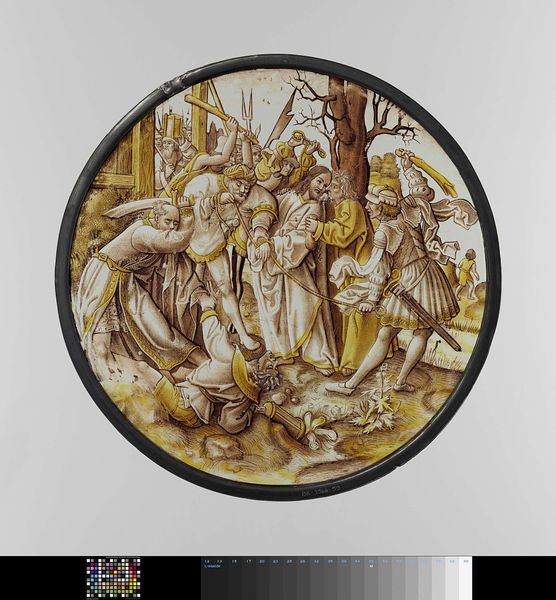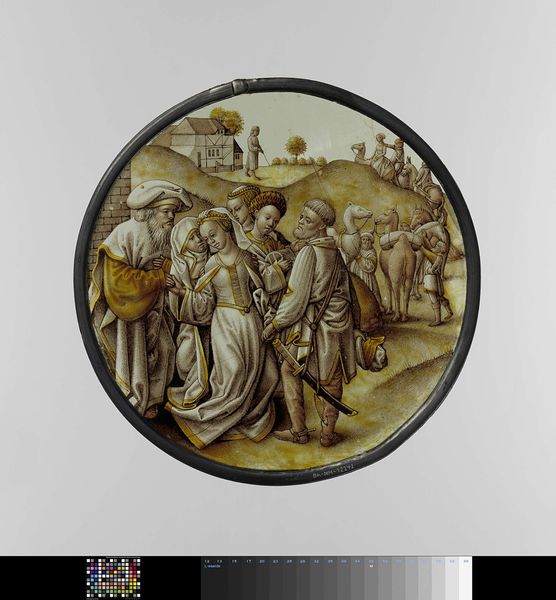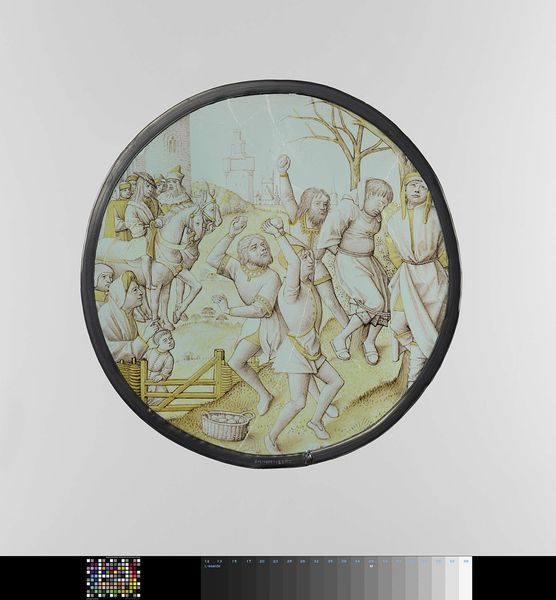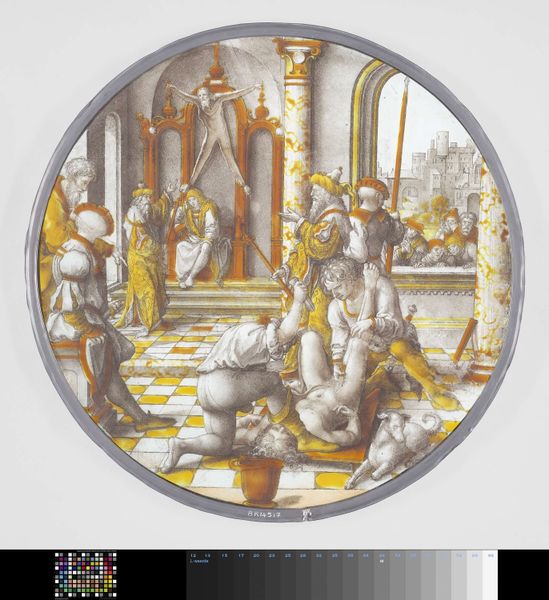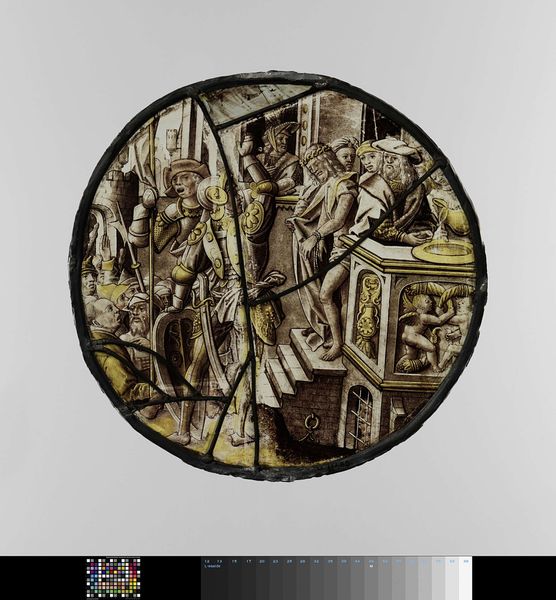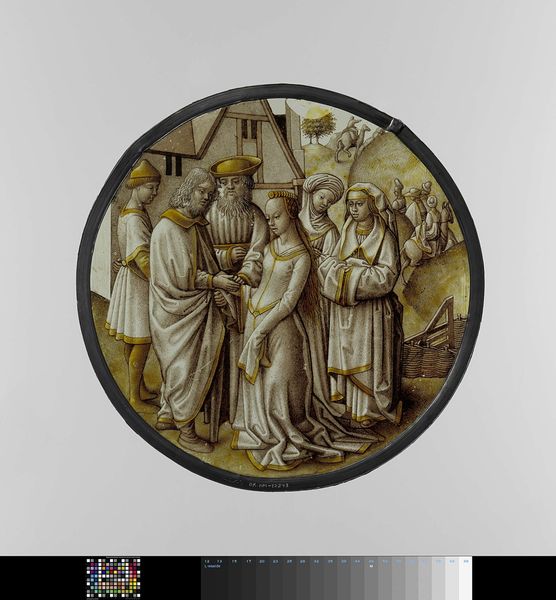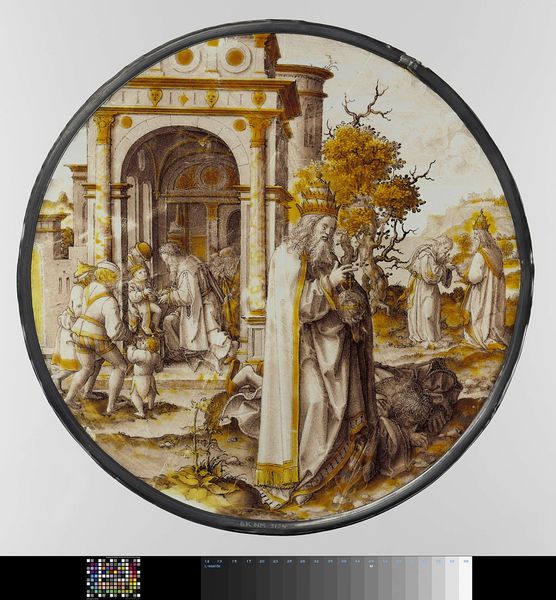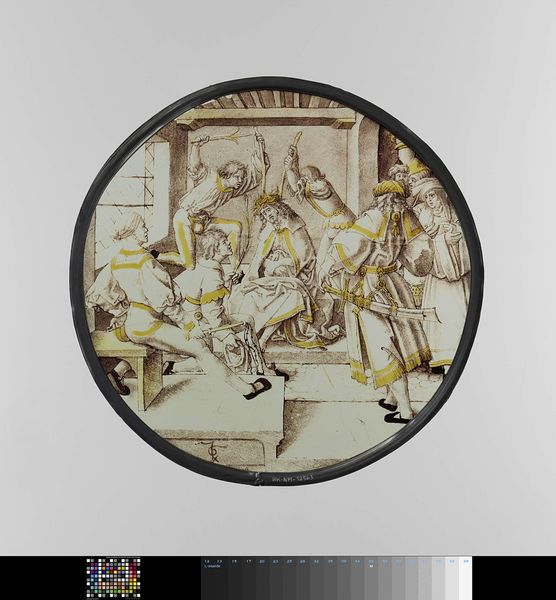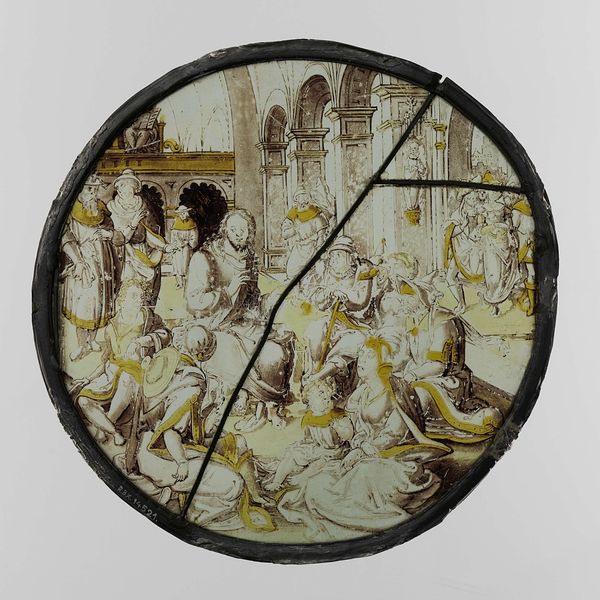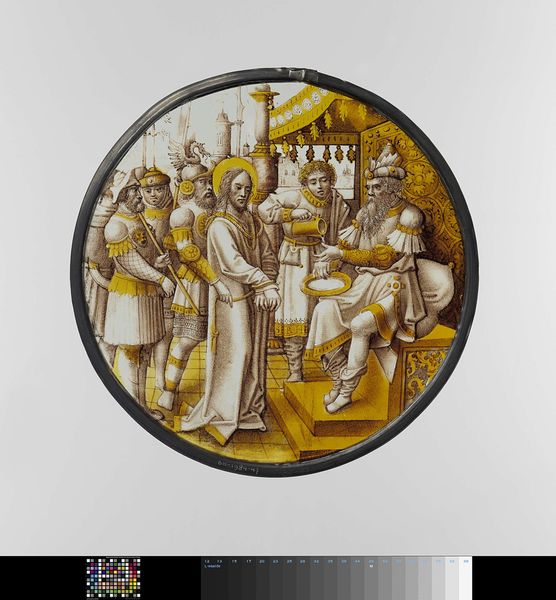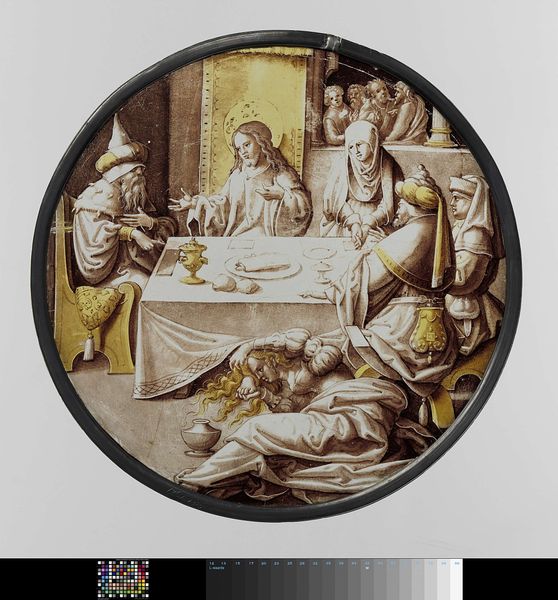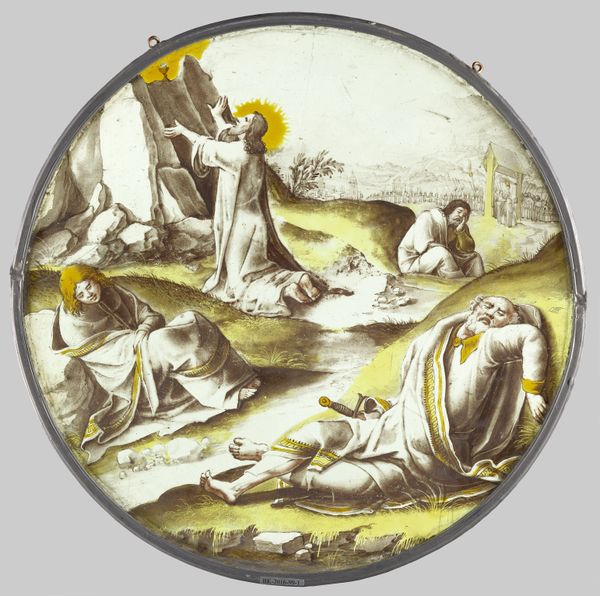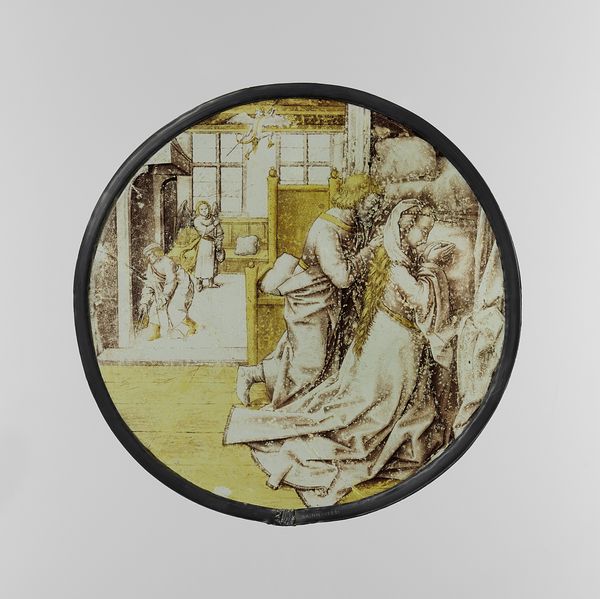
glass
#
medieval
#
narrative-art
#
figuration
#
11_renaissance
#
glass
#
oil painting
#
history-painting
#
decorative art
Copyright: Rijks Museum: Open Domain
Curator: Look closely at this roundel, "The Resurrection of Christ," made of glass sometime between 1515 and 1520. It is held in the Rijksmuseum's collection. What's your initial impression? Editor: It's immediately striking how dynamic it feels, despite being, essentially, a small, static scene. There's a real sense of drama with the figures contorted in surprise and the light emanating from Christ. It seems to overflow beyond its circular frame. Curator: Indeed. The composition, though busy, cleverly uses the circular format. Christ is the clear focal point, centrally placed and almost bursting outwards, and the artist directs our gaze towards him through lines of sight. Observe the stark vertical lines: the tomb's opening, the flag staff, and Christ himself. They anchor the composition, adding a sense of triumphant stability. Editor: And Christ himself embodies recognizable symbols. His raised hand in blessing and triumphant bearing. The flag he carries represents victory over death, echoing earlier artistic renderings of him holding a lamb or a cross. I see familiar narratives represented within the single frame; Christ emerging victorious and guards who have fallen—visually, this signals his overwhelming power, doesn't it? Curator: Absolutely. The rendering style, employing vitreous enamel paints, emphasizes outlines. This highlights the key aspects and gestures, underscoring their symbolic import. Did you note the artist's rather limited use of color and tonal variation, though? That aspect reduces depth, compressing the scene, making it flatter and more impactful, emphasizing line and symbol. Editor: Yes, the near monochrome gives it an antique feel even if we didn’t already know its historical context. The symbolism really resonates though. Notice, the landscape elements aren't treated realistically—they're more about communicating concepts. The rock-like structure references the tomb itself, almost womb-like, implying rebirth rather than portraying physical terrain. Curator: Precisely. The material itself—painted glass—is critical to its meaning. Medieval stained glass possesses a spiritual resonance as a medium. This roundel invites not just viewing, but contemplation, like icons that carry meaning beyond their physical substance. Editor: Yes, this small-scale glass panel invites the viewer to experience something profound; its artistic structure supports the overall iconography, delivering something greater than the sum of its symbolic parts. It holds a powerful message for us, centuries later, contained within its glassy shell.
Comments
No comments
Be the first to comment and join the conversation on the ultimate creative platform.
